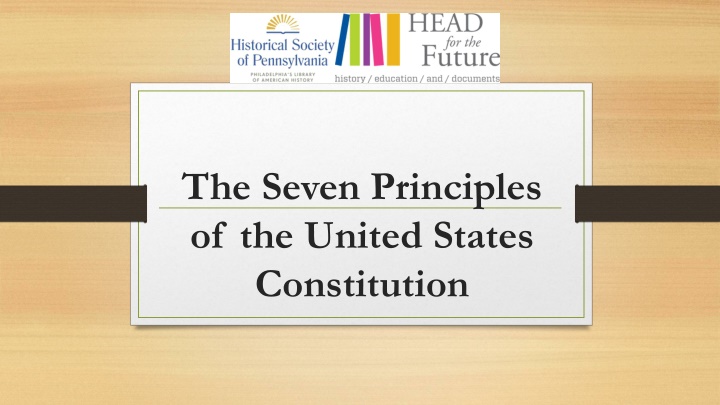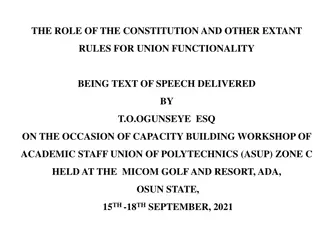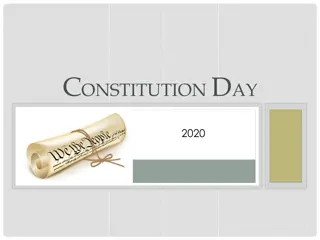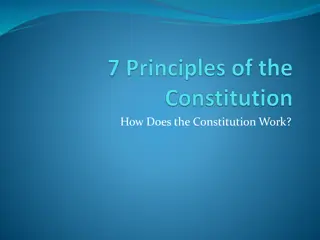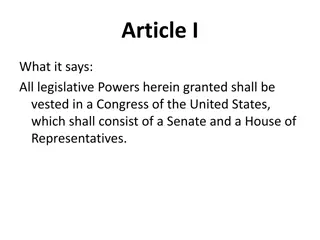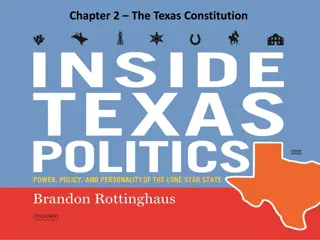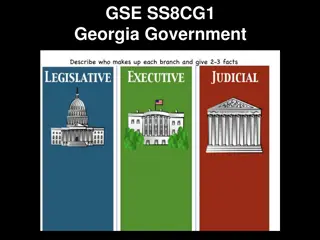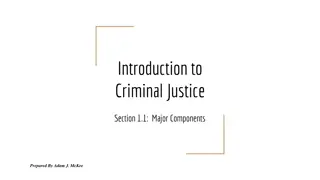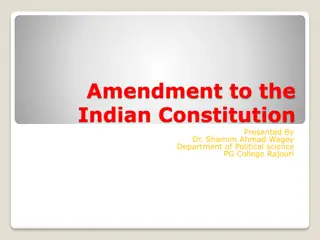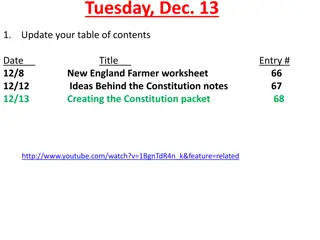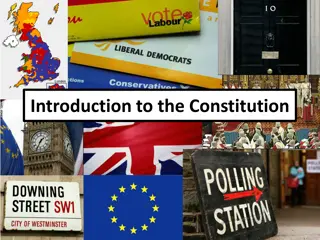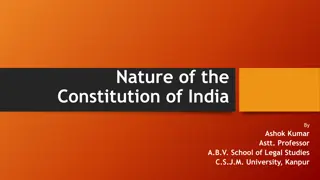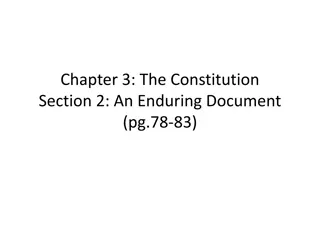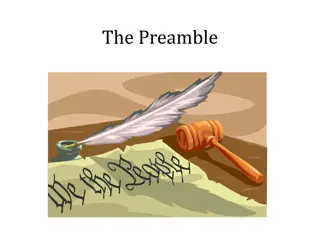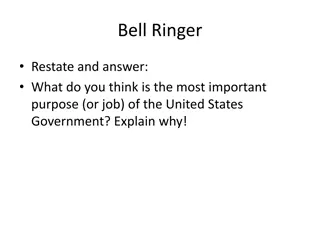The Seven Principles of the United States Constitution Explained
The United States Constitution is based on seven key principles: Popular Sovereignty, Republicanism, Limited Government, Federalism, Separation of Powers, Checks and Balances, and Individual Rights. These principles outline the foundation of the American government, emphasizing the importance of citizen participation, accountability, limited governmental power, division of authority, and protection of individual liberties.
Download Presentation

Please find below an Image/Link to download the presentation.
The content on the website is provided AS IS for your information and personal use only. It may not be sold, licensed, or shared on other websites without obtaining consent from the author.If you encounter any issues during the download, it is possible that the publisher has removed the file from their server.
You are allowed to download the files provided on this website for personal or commercial use, subject to the condition that they are used lawfully. All files are the property of their respective owners.
The content on the website is provided AS IS for your information and personal use only. It may not be sold, licensed, or shared on other websites without obtaining consent from the author.
E N D
Presentation Transcript
The Seven Principles of the United States Constitution
Popular Sovereignty People control the government and the government is accountable to the people
Republicanism A governmental system that advocates for people electing their own legislatures to represent them in government
Limited Government Governments power is limited by the Constitution
Federalism Separation of governmental power between state and national governments
Separation of Power The separation of governmental power into three independent branches of government Executive, Legislative, and Judicial
Checks and Balances Different branches of government are empowered to balance the power of the other branches to ensure that no one branch consolidates too much power
Individual Rights Rights guaranteed by the Constitution to citizens of the United States Bill of Rights
Exit Ticket 1. Pick your Favorite Principle 2. Describe what that Principle means in one sentence 3. Explain why it is your favorite principle in two sentences Popular Sovereignty Limited Government
